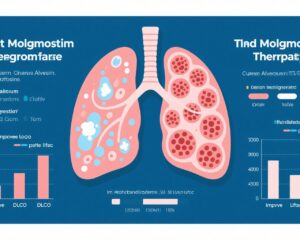Highlight
- A hospital-wide crossover trial compared lactated Ringer’s solution with normal saline for routine intravenous fluid therapy.
- The primary outcome was a composite of death or hospital readmission within 90 days of index admission.
- No significant differences in primary or secondary outcomes were observed between the fluid types.
- The study suggests no clinical superiority of lactated Ringer’s solution over normal saline on hospital-wide outcomes.
Study Background and Disease Burden
Intravenous (IV) fluids are essential in the management of hospitalized patients across a wide range of clinical scenarios, from maintenance hydration to resuscitation in shock. Normal saline (0.9% sodium chloride solution) has traditionally been the most commonly used crystalloid fluid worldwide. However, it contains a higher chloride concentration than plasma, which has raised concerns about potential metabolic and renal effects. Lactated Ringer’s solution, a balanced crystalloid with electrolytes closer to plasma composition, has been proposed as a safer and more physiologic alternative. Prior smaller clinical trials and meta-analyses have suggested possible renal and mortality benefits of lactated Ringer’s solution, but results have been inconsistent and insufficient for definitive clinical recommendations. Thus, there remains clinical uncertainty about whether hospital-wide use of lactated Ringer’s solution confers better outcomes compared with normal saline when used routinely for IV fluid therapy.
Study Design
This cluster-randomized, crossover trial was conducted across hospitals in Ontario, Canada. The study used a two-period, two-sequence, open-label design. Hospitals were assigned to administer either lactated Ringer’s solution or normal saline as the default IV fluid hospital-wide for 12 weeks, after which a washout period was followed by crossover to the alternate fluid for the subsequent 12 weeks. The open-label nature reflects pragmatic hospital practice without blinding.
The primary outcome was a composite of death or hospital readmission within 90 days after patients’ index admission to the hospital during each intervention period. Secondary outcomes included the individual components of the primary endpoint, hospital length of stay, initiation of dialysis within 90 days, emergency department visits within 90 days, and discharge disposition (particularly discharges to facilities other than home). Outcome data were obtained from comprehensive health administrative databases.
The primary analytical approach was at the hospital level, with the effect estimate representing the average difference in outcomes between lactated Ringer’s and normal saline periods across participating hospitals.
Key Findings
Seven hospitals fully completed both 12-week periods of the trial before the COVID-19 pandemic interrupted the study timeline. Data analyzed included 43,626 eligible patients.
The mean incidence of the composite primary outcome (death or readmission within 90 days) was 20.3% (±3.5%) during the lactated Ringer’s solution period and 21.4% (±3.3%) during the normal saline period. The adjusted difference was -0.53 percentage points with a 95% confidence interval from -1.85 to 0.79 percentage points (P=0.35), indicating no statistically significant difference.
Secondary outcomes, including death alone, readmission alone, length of hospital stay, new dialysis initiation, emergency department visits, and discharge to institutional care, did not differ significantly between the fluid regimens.
Importantly, no serious adverse events attributed to either fluid were reported during the trial.
Expert Commentary
This large, pragmatic, hospital-level crossover trial provides robust evidence that a hospital-wide policy favoring lactated Ringer’s solution over normal saline for routine intravenous fluid administration does not reduce 90-day mortality or readmissions. The study’s cluster-randomized crossover design increases generalizability across diverse hospital settings and patient populations.
However, some limitations should be considered. The open-label design may introduce biases related to fluid choice documentation or clinical practices, though endpoint assessment using administrative records mitigates this risk. The relatively short 12-week intervention periods may limit observation of long-term effects. The trial’s interruption due to the COVID-19 pandemic restricted enrollment to seven hospitals, which may affect statistical power despite a large patient sample.
Previous smaller clinical trials raised hypotheses about renal protection and survival benefits with balanced fluids, but this study’s null results suggest that any advantages may be subtle or context-specific rather than evident on a hospital-wide scale. Clinicians should continue to weigh fluid selection individually based on patient-specific factors and clinical indications.
Conclusion
In conclusion, routine hospital-wide administration of lactated Ringer’s solution instead of normal saline did not yield significant improvements in death or readmission rates within 90 days of hospitalization. This evidence provides a valuable reference for hospitals considering fluid formularies and reinforces that both fluids perform similarly in broad practice for intravenous fluid therapy. Further research may explore specific patient subgroups or clinical scenarios where balanced crystalloids could have targeted benefits.
References
1. Semler MW, et al. A Crossover Trial of Hospital-Wide Lactated Ringer’s Solution versus Normal Saline. N Engl J Med. 2024. doi:10.1056/NEJMoa2416761
2. Self WH, et al. Balanced Crystalloids versus Saline in Critically Ill Adults. N Engl J Med. 2018;378(9):829-839. doi:10.1056/NEJMoa1711584
3. Young P, Bailey M, Beasley R, et al. Effect of a Buffered Crystalloid Solution vs Saline on Acute Kidney Injury Among Patients in the Intensive Care Unit: The SPLIT Randomized Clinical Trial. JAMA. 2015;314(16):1701–1710. doi:10.1001/jama.2015.12372


